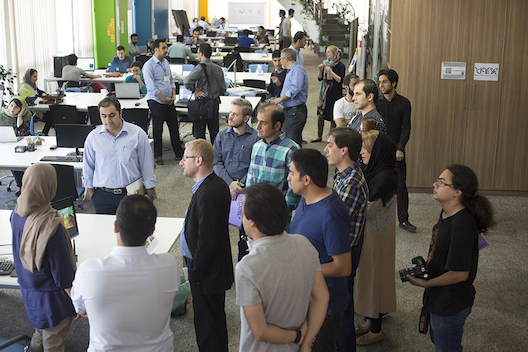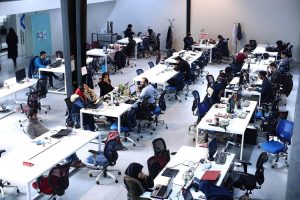Startup Accelerators in Iran
A Rapid Rise Under Pressure
Iran’s first prominent accelerator, Avatech, launched in 2014. Just a few years later, the country reached an estimated 162 startup accelerators, according to national and UNDP reports. This surge wasn’t accidental—it emerged from necessity. After the 2018 withdrawal from the JCPOA and re-imposition of sanctions, Iran intensified its focus on homegrown innovation infrastructure. Accelerators became key to this mission, enabling startups to develop local alternatives to global tech and services while generating jobs and digital solutions.
Structure and Specialization
What makes startup accelerators in Iran distinct is their sector-focused strategy and private-sector dominance:
-
69% are specialized, with core areas including:
-
Agriculture & Food
-
Water & Environment
-
Health & Biotechnology
-
Fintech & Smart Cities
-
ICT and Creative Industries
-
-
~90% are privately owned, often operating as joint-stock or limited liability companies.
This structure allows for leaner operations and faster decision-making compared to government-backed incubators. While many are based in Tehran, Isfahan, and Shiraz, their impact stretches across the country—particularly in high-growth digital and green sectors.
Support Systems That Drive Growth
Iranian accelerators mirror global models in their offerings, but with strong local adaptation:
-
Seed funding in exchange for equity (e.g., Avatech provides ~$8,000–15,000)
-
Mentorship through local experts and returning diaspora
-
Workspace and infrastructure via university and tech park partnerships
-
Access to domestic networks of VCs and angel investors
Their programs often support startups with MVPs, strong founding teams, and the potential to scale—especially in underserved or tech-ready sectors like fintech, agri-tech, and e-health.
Challenges That Define the Landscape
Despite their momentum, startup accelerators in Iran face unique, layered challenges:
-
Sanctions block access to international finance, global VCs, and key software/hardware.
-
Talent drain limits the availability of seasoned mentors and executives.
-
Legal inconsistencies persist, as early contracts mimicked foreign systems without fitting Iran’s business law.
-
Scaling barriers are common—especially for startups trying to expand nationally without strong infrastructure or B2B partnerships.
Still, these difficulties have cultivated resilience. Many accelerators are now producing startups that can thrive independently, using localized tools, lean methodologies, and regional networks.
Public-Private Collaboration and Support
The government’s response to sanctions has included policy and financial support for accelerators:
-
Loans, tax breaks, and grants from state innovation funds
-
University-linked accelerators through science and technology parks (e.g., Pardis Technology Park)
-
Programs to re-engage Iranian entrepreneurs abroad, bringing international experience back into the local ecosystem
This hybrid model of private agility and public support has helped accelerators remain functional—and in some cases, world-class—in a restricted environment.
Why Accelerators Matter Now
In a country where international isolation continues to hinder traditional business models, startup accelerators in Iran have become islands of opportunity. They equip founders with the tools to build high-impact businesses, fill crucial market gaps, and contribute to national self-sufficiency.
| Key Stats (2021) | Insight |
|---|---|
| Total Accelerators | ~162 |
| Specialized Programs | 69% |
| Main Focus Sectors | Agriculture, Fintech, Health, ICT |
| Geographic Hubs | Tehran, Isfahan, Shiraz |
| Ownership | ~90% Private |
| Government Role | Policy support, loans, university parks |
| Main Challenges | Sanctions, limited foreign VC, legal gaps |
Conclusion: A Homegrown Ecosystem With Global Potential
The journey of startup accelerators in Iran reveals a powerful truth: innovation doesn’t need ideal conditions—it needs committed infrastructure, focused talent, and strategic adaptation. While global politics continue to shape Iran’s economic realities, its accelerators have found ways to nurture startups from idea to impact.
If the current trajectory holds, Iran’s startup ecosystem—led by these accelerators—could become a case study in innovation under pressure, and a signal to the world that even in isolation, progress finds its way.











Post Comment